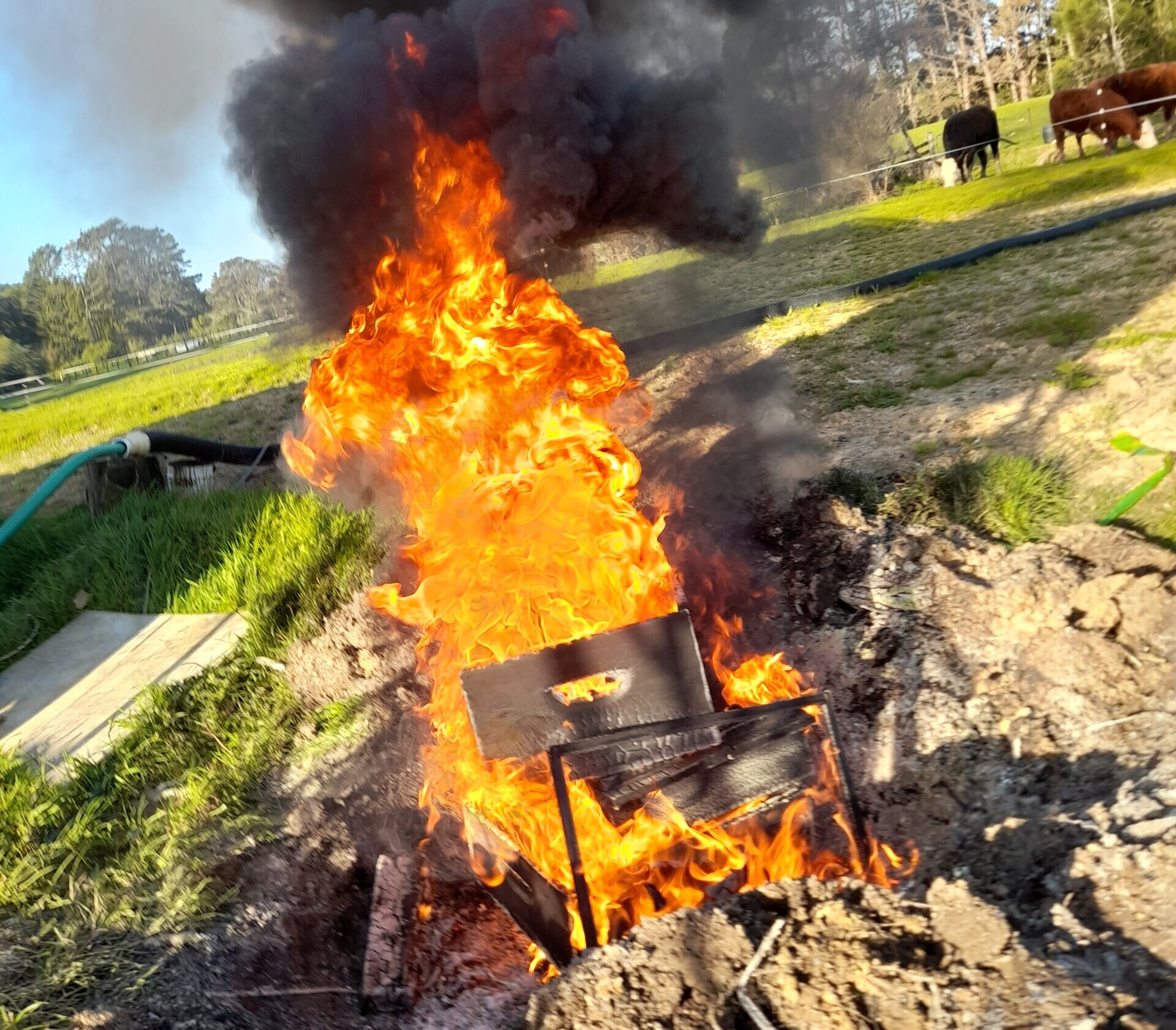HEALTH AND SAFETY
Apiculture New Zealand and Fire and Emergency New Zealand (FENZ).
The wildfire risk around the country is currently quite variable. There have been unseasonably warm temperatures, and some areas have had significant rain while others have remained very dry. This is likely to be a common theme for the coming wildfire season as variations in the weather dictate which areas will reach high wildfire danger levels and when.
Fire risk conditions can be deceptive. Vegetation can look green, but still be dry enough for a wildfire to occur. Regularly check your fire risk and safety advice at www.checkitsalright.nz. Knowing the wildfire risk in the locations you are working in is important, including going over your beekeeping plan to manage that risk.
If you haven’t already, be sure to visit the Fire and Emergency New Zealand website to see if you require a fire permit: https://www.firepermit.nz/fenz/Default.aspx
It is also worth considering using alternatives to smokers in dry conditions, such as liquid smoke or bee escape boards. These basic tips from both Fire and Emergency New Zealand and the Australian fire services are a good reference:
- ensure you take a good look around apiary sites for any possible sources of ignition before you leave. (Fire and Emergency recommends waiting 15 to 20 minutes after finishing checks before leaving the site.)
- try to work when there’s higher humidity or in cooler conditions, such as early morning
- ensure your smoker is in good condition and that fire or hot cinders cannot escape through the base air inlet
- light the smoker in a fireproof container. The container will contain any burning fuel that falls out of the smoker
- light the smoker in an area without flammable vegetation
- use ‘cool’ smoke: hot smoke is accompanied by sparks and flames and is a fire risk, so add more fuel
- extinguish the smoker with one of the following methods:
- fill the smoker with water before emptying it, ensuring that it is completely out
- block the nozzle and place the smoker in an airtight, fireproof container.
- emptying the smoker into water or a hole is not recommended due to the risk of embers escaping
- ensure you have a phone or other means of contacting emergency services
- carry a fire extinguisher and/or water in all vehicles
- sit the smoker on the lid of another hive rather than on the ground when not in use
- don’t drive or park in long grass. Regularly check for grass buildup under the vehicle and where you stop or park. The heat from vehicle exhausts and engine parts can ignite dry vegetation.
If you need to burn hives due to American foulbrood (AFB), check if you require a fire permit. If your district is in a Prohibited fire season (total fire ban), you can burn hives if you have proof of AFB and the requirement to destroy by burning. Fire and Emergency can issue you a fire permit but will first need to inspect the proposed burn site to assess the fire risk. If you need a permit, apply for this as soon as possible.

AFB-infected hiveware being destroyed.
